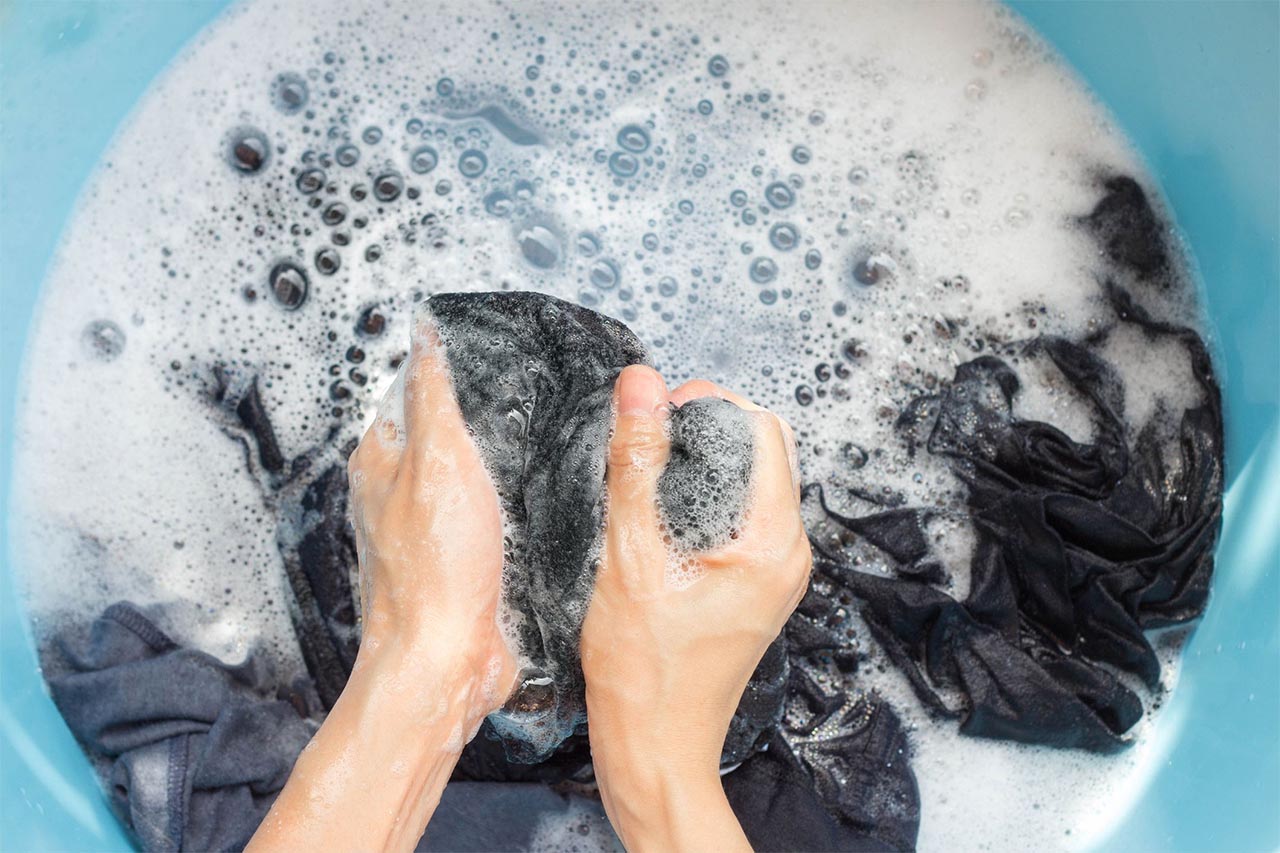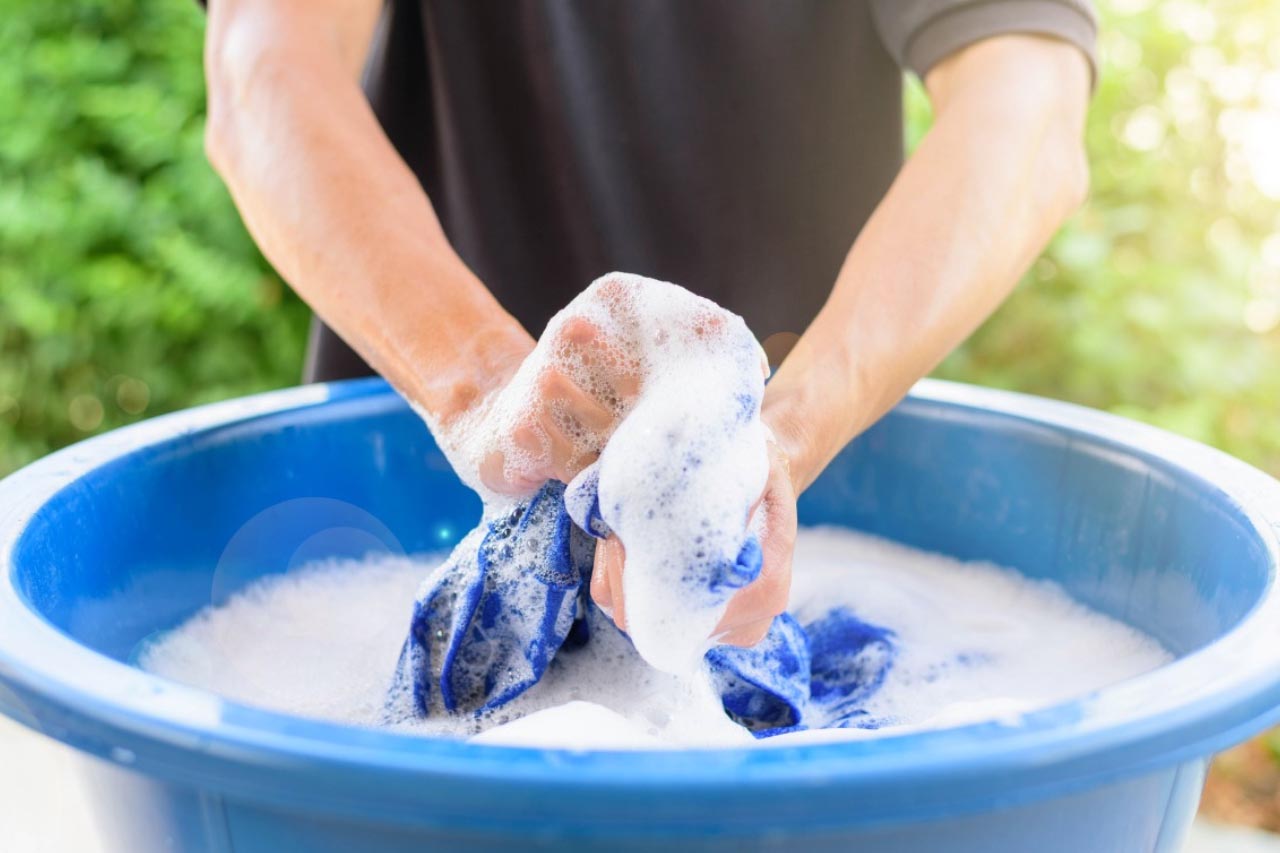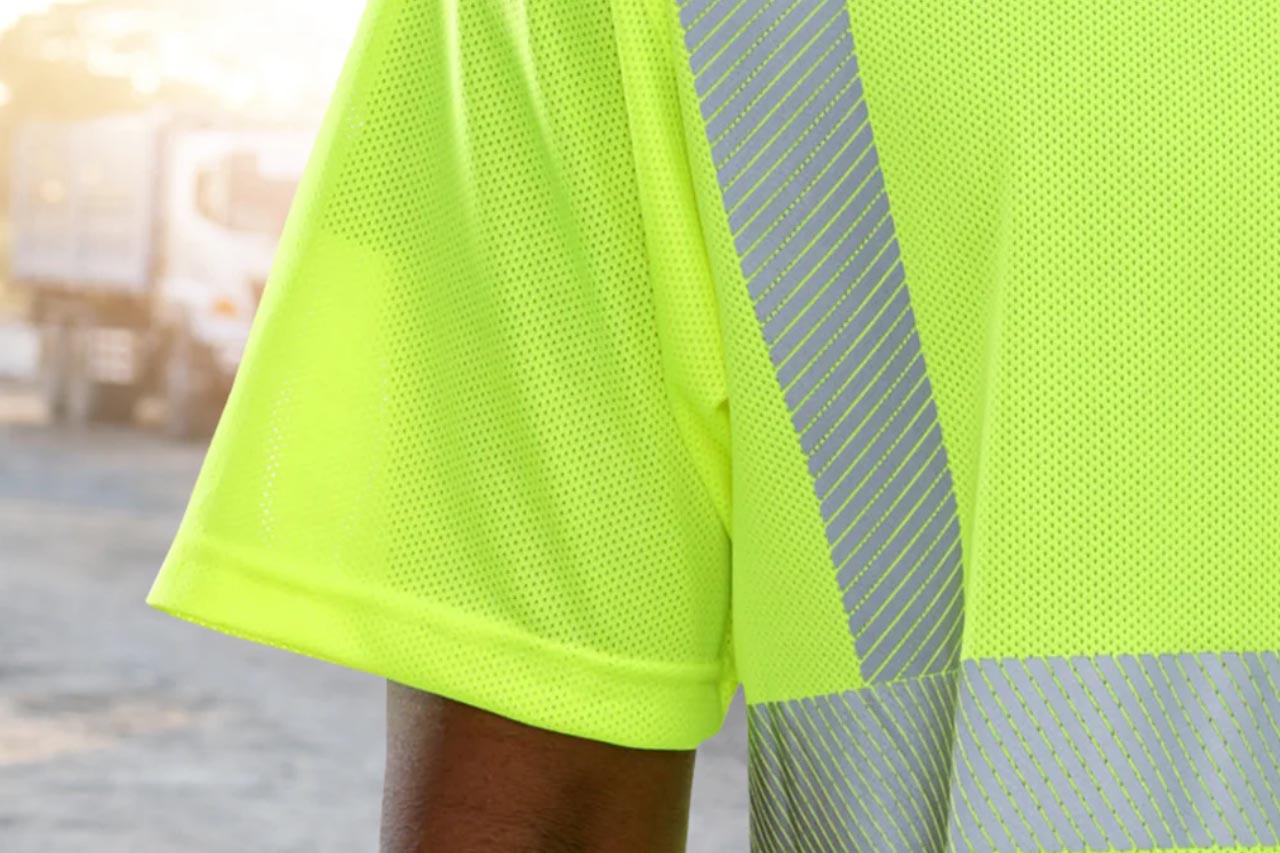How to Clean Safety Vests?
Workwear is one of the essential measures to ensure safety in the workplace and production environments. However, when wearing these protective garments, it’s inevitable that they may get stained or dirty with unwanted substances such as ink, tar, grease, or oil. So, what is the proper way to clean workwear? Let’s take a look at the effective cleaning methods for stains on protective clothing with GAK!
1.Why You Should Clean Your Workwear Regularly and Properly

Before You Start Cleaning, Check Your Workwear
Before you begin cleaning, take a moment to inspect your workwear. Can you spot the reflective details sewn onto it? These reflective strips are made from special fabrics designed to reflect light, so it’s essential to be very cautious when cleaning, especially when it comes to flame-resistant workwear. Improper washing can significantly reduce the protective quality of the garment, increasing the risk for the wearer.
Reasons Why You Should Clean Your Workwear Regularly and Properly:
- Safety: The primary purpose of wearing workwear is to ensure your safety and protection. If your clothing or gear is dirty or damaged, you may not benefit from it. For example, you might be wearing a two-sided mesh reflective vest, but if there are stains on the reflective material, the effectiveness of the vest is compromised. Drivers, machine operators, and even your colleagues might not notice you immediately, which defeats the purpose of wearing a reflective vest. Proper and regular care helps maintain the visibility of high-visibility garments, ensuring the safety of the wearer.
- Cleanliness: Whether you’re working in the sun or indoors, sweat will inevitably accumulate on your workwear. If you don’t wash your workwear regularly, both you and your clothes will likely have an unpleasant odor that can bother those around you. Germs and bacteria can remain on your clothes, potentially causing itching and skin irritation. A clean workwear garment is essential for maintaining a professional appearance in the workplace.
Cost-Effectiveness: Workwear safety equipment is not cheap. It’s an investment made by employers, and it’s important to respect and maintain it. However, we’re talking about your safety here. Employers might choose to buy cheaper, lower-quality workwear to save money, but this can increase risks for employees. GAK’s workwear is high-quality, but it needs regular cleaning to ensure its functionality. Well-maintained workwear will last longer, allowing the employer to save on replacement costs and possibly allocate those savings toward year-end bonuses.
2. How to Properly Wash Safety Vests

To Clean Workwear Properly, Always Check the Care Label
When cleaning workwear, always refer to the care label sewn onto the garment. Not all types of workwear can be machine-washed. The manufacturer will provide guidance on the recommended water temperature, detergent type, and other maintenance instructions. Be sure to pay attention to these details to avoid damaging your protective clothing.
However, for effective cleaning, it’s recommended to soak your safety vest in detergent for 15 to 30 minutes. For tougher stains, you can extend the soaking time by 10–15 minutes, but avoid soaking for more than 45 minutes to prevent the fabric from becoming stiff and deteriorating quickly.
So, how should you treat different types of stains? Let’s take a look at these cleaning tips from GAK to keep your workwear in top condition!
2.1 How to Treat Grease Stains
For grease stains on your safety vest or workwear, you should use a few drops of dishwashing liquid in a basin of water. Soak the garment for 5 to 10 minutes and then gently rub the grease stain. Generally, grease stains will start to fade after a few hand washes.
Once the grease stain is removed, you should wash the garment with regular laundry detergent. Dishwashing liquid is not recommended for washing clothes as it may cause skin irritation, so washing with laundry detergent is essential to avoid any issues.
2.2 How to Treat Oil and Lubricant Stains
When your workwear gets stained with engine oil or vehicle grease, your first instinct might be to soak it in detergent at a temperature of 80°C. However, this method is incorrect and can damage your workwear. Safety vests and work clothing often have mesh fabric for breathability or reflective details that cannot withstand high temperatures. So, washing at such high temperatures may harm your protective gear.
To treat stubborn oil or lubricant stains on workwear, you should try using dishwashing liquid as mentioned above or a solution of baking soda and hydrogen peroxide as follows:
Steps:
- Spray hydrogen peroxide directly on the oil or grease stain.
- Apply a small amount of dishwashing liquid on the stained area after spraying hydrogen peroxide.
- Sprinkle a thin layer of baking soda over the grease stain.
- Use a small brush (e.g., an old toothbrush) to scrub the stain.
- Soak the garment in this mixture for 45–60 minutes, then wash as usual. You will be amazed at how effectively this method removes oil stains.
Note: This method works best for fresh grease stains. If the stain has been there for a while, it may be harder to remove.
2.3 How to Treat Asphalt Stains
If your workwear gets stained with asphalt, you can use gasoline, menthol oil, or rubbing alcohol. Both gasoline and rubbing alcohol are solvents that can effectively neutralize and dissolve asphalt stains, but they come with a risk of fire, so you should be cautious when choosing these solutions.
Alternatively, menthol oil or ointment is a safer option. Here’s what you should do:
Steps:
- Apply an appropriate amount of menthol oil or ointment to the asphalt stain.
- Let it sit for 15 minutes to soften the asphalt.
- Afterward, wash the garment using a detergent that can effectively remove the asphalt stain.
2.4 How to Treat Paint Stains on Workwear
To remove paint stains from your workwear, you can use turpentine or sesame oil. However, you must be very careful not to let turpentine or sesame oil touch the printed areas on the clothing as it may cause the ink to fade and damage the protective gear.
Steps:
- Soak or apply sesame oil or turpentine to the stained area.
- Use a toothbrush to gently scrub the paint stain until it fades.
- Wash the garment with laundry detergent until the oil residue is completely gone.
2.5 How to Treat Coffee Stains
To remove coffee stains from your safety vest or workwear, mix 1/2 tablespoon of laundry detergent with 1-2 tablespoons of vinegar in a bowl. Soak your workwear in this solution for about 30 minutes. Then, rinse with clean water and wash the garment again. The stain should disappear completely.
2.6 How to Treat Mud Stains
For workwear that gets muddy, it’s best to wash by hand to ensure the garment is cleaned properly and to avoid clogging your washing machine with dirt. Here's how to handle mud stains:
Steps:
- Before washing, gently rub and shake off any dirt that has stuck to the garment.
- Apply a small amount of laundry detergent to the stained areas and let it sit for 15 minutes.
- Pour warm water (below 45°C) into a basin and add the appropriate amount of detergent.
- Place the workwear in the basin and gently scrub to remove the mud.
- Let it soak for 15 minutes.
Wash the garment again until it is clean.
3. How to Clean Reflective Surfaces

How to Clean Reflective Surfaces Properly
To clean reflective surfaces on your workwear safely, avoid rubbing or scrubbing the reflective areas, as this can cause the reflective material to crack, break, or lose its ability to reflect light. Here’s how to clean reflective surfaces properly:
Required Tools:
- Soft, lint-free cloth
- Clean water
- Dish soap (optional)
- White vinegar (optional)
- Baking soda (optional)
- Rubbing alcohol (optional)
Steps for Cleaning:
- Wipe the Reflective Surface:
Use a soft, lint-free cloth and clean water to gently wipe the reflective surfaces, removing dust, dirt, or debris. Be sure to avoid harsh scrubbing. - Mild Soap Cleaning (If Needed):
If the surface still has dirt or stubborn marks, dilute a small amount of dish soap in warm water. Dampen the cloth in the soapy water and wring out excess water. Gently wipe the reflective areas, then rinse with clean water. - Vinegar Solution for Stubborn Stains:
For tougher stains, mix one part white vinegar with one part water. Dampen a soft cloth in the mixture, wring out excess liquid, and wipe the surface. Rinse with clean water afterward. - Baking Soda for Stubborn Dirt:
Baking soda can be effective for removing tough stains on the reflective material. Sprinkle a small amount of baking soda on the surface and gently scrub with a damp cloth. Afterward, rinse the surface with a clean, damp cloth. - For Ink or Paint Stains:
If there are stains from ink or paint, use rubbing alcohol. Dampen a cotton ball or cloth with alcohol and gently rub the stain. Afterward, rinse with clean water to remove the alcohol.
4. Important Tips to Avoid When Cleaning Workwear
To keep your workwear in good condition and prolong its lifespan, it’s important to follow these key guidelines:
- Avoid using bleach on your workwear.
- Do not wash reflective workwear with regular clothes or dark-colored items.
- Avoid machine washing workwear, especially reflective gear.
- Do not iron directly on printed areas, ink, or reflective details.
- Avoid drying in direct sunlight or exposing your workwear to intense heat.
- Do not wash at temperatures above 60°C.
Conclusion
Proper cleaning and maintenance of workwear are essential to ensure that your clothing stays in good condition and performs its protective function. Given the specific nature of workwear—such as flame resistance, electrical safety, and high visibility—cleaning requires special care. After about a year of use, it’s often best to replace your workwear to maintain maximum safety.
We hope this guide to cleaning workwear helps make the process easier and more convenient for you. For high-quality and affordable protective gear, don’t forget to explore our offerings at GAK.
Choose GAK—Choose great prices, choose top quality!



